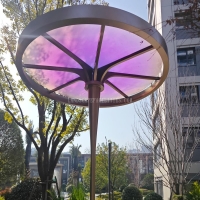Welcome to the website for landscape facilities products and knowledge.
How does the bin’s design ensure it remains functional in areas with limited infrastructure?
In regions with limited infrastructure, waste management can be a significant challenge. However, innovative bin designs address these issues by prioritizing durability, simplicity, and adaptability. Here’s how these bins remain functional even in demanding environments:
1. Durable Materials: Bins designed for such areas are often made from robust materials like reinforced plastic, galvanized steel, or corrosion-resistant metals. These materials withstand harsh weather conditions, vandalism, and heavy use, ensuring longevity.
2. Low-Maintenance Features: Simplified mechanisms, such as pedal-operated lids or open-top designs, reduce the need for frequent repairs. This is critical in areas where maintenance services are scarce.
3. Modular and Scalable Designs: Some bins are modular, allowing for easy expansion or reconfiguration based on waste volume. This flexibility is ideal for growing communities with evolving needs.
4. Off-Grid Compatibility: Solar-powered compactors or bins with odor-control systems function independently of electrical grids, making them suitable for remote locations.
5. Ease of Transportation and Installation: Lightweight yet sturdy designs enable easy transport and setup, even in areas with poor road networks.
By focusing on these principles, bin manufacturers ensure reliable waste management solutions for underserved regions, promoting cleanliness and sustainability.
Related search:

Recommendation
Metal frame with gradient color acrylic combined with high-end shading landscape facilities